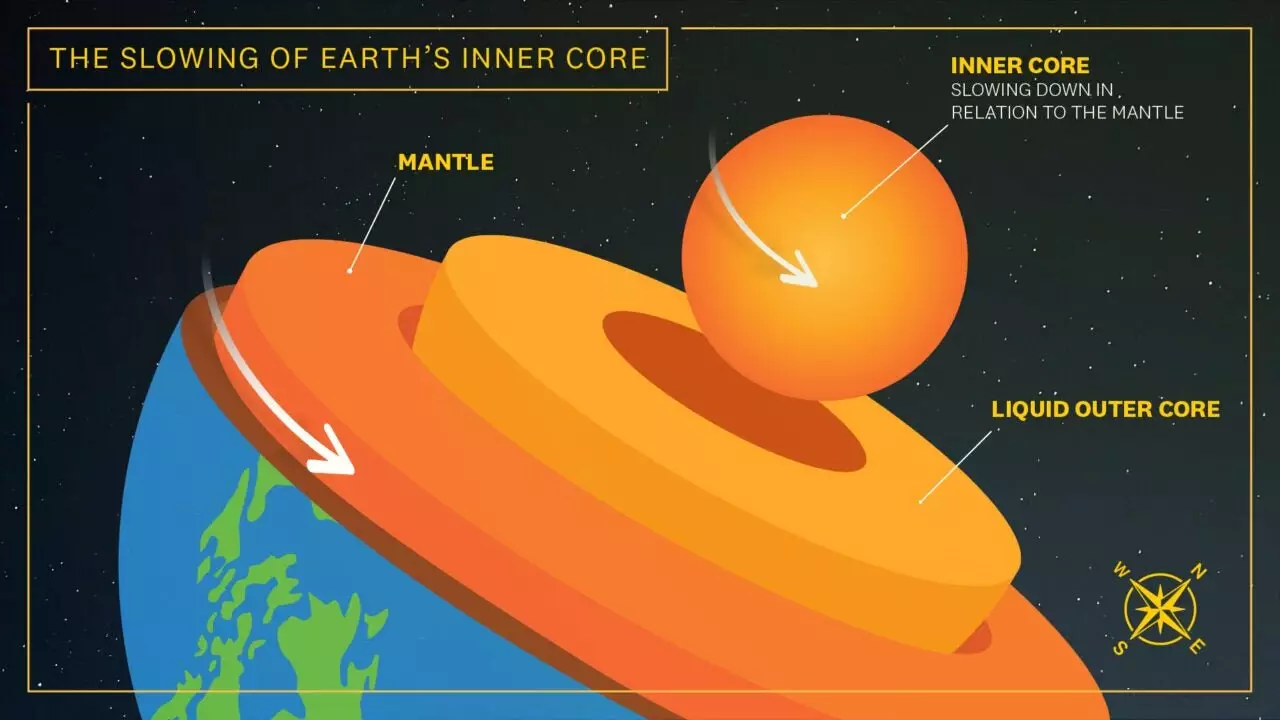Recent research conducted by scientists at the University of Southern California has provided clear evidence that the Earth’s inner core is slowing down for the first time in many decades. This discovery contradicts previous studies suggesting that the inner core rotates faster than the planet’s surface. According to John Vidale, Dean’s Professor of Earth Sciences at USC Dornsife College of Letters, Arts and Sciences, the inner core began to decrease its speed around 2010, moving at a slower pace than the Earth’s surface. This revelation sheds new light on the movement of the inner core that has been a topic of debate within the scientific community for over two decades.
The inner core, which is a solid iron-nickel sphere roughly the size of the moon, is located more than 3,000 miles beneath the Earth’s surface. Due to its inaccessibility, scientists rely on seismic waves from earthquakes to study the inner core’s movement. In the USC study, researchers utilized waveform data and repeating earthquakes to analyze the inner core’s behavior. This approach provided unique insights into the inner core’s movement, offering a more detailed understanding of its speed relative to the Earth’s mantle.
The slowing down of the Earth’s inner core is attributed to various factors, including the churning of the liquid iron outer core that surrounds it. This churning process generates Earth’s magnetic field and exerts gravitational tugs on the dense regions of the rocky mantle. The combined effects of these processes have resulted in the inner core moving at a slower pace compared to its speed in previous decades. This shift in the inner core’s movement has significant implications for the Earth’s surface, although the exact consequences are yet to be fully understood.
Looking ahead, the USC scientists plan to delve deeper into studying the trajectory of the inner core to gain a more comprehensive understanding of why it is shifting. By analyzing more seismic data and exploring new methodologies, the researchers hope to uncover additional insights into the inner core’s movement. John Vidale expressed optimism about the future of this research, stating that the inner core’s dynamics may be more complex and dynamic than currently known. This ongoing research aims to shed further light on the processes influencing the Earth’s inner core and its impact on the planet’s geological dynamics.
The recent findings from the USC study provide valuable insights into the movement of the Earth’s inner core. By demonstrating that the inner core is slowing down for the first time in many decades, the research challenges existing theories and opens up new avenues for exploration in the field of geophysics. As scientists continue to unravel the mysteries of the inner core’s behavior, our understanding of the Earth’s interior dynamics will undoubtedly deepen, leading to further advancements in the field of earth sciences.


Leave a Reply